Duruma People and their Culture in Kenya
Who are the Duruma People in Kenya? The Duruma are a people of about 183,000 just inland from the Indian Ocean coast of Kenya along the Nairobi-Mombasa highway south to the Tanzania border.
Their area is marked roughly by the triangle of Taru, Mazeras and Lunga Lunga on the border. The main administrative center is Kinango, about two hours drive from Mombasa.
They are one of the Mijikenda ("Nine Tribes") of the coastal ridge. All of the nine are sometimes called by the name of the largest (570,400) and most northern tribe of Mijikenda, the Giryama, who live near the coastal city of Malindi.
The Duruma people live on the semi-arid plains, one mountain range inland from the seacoast of eastern Kenya. The large city of Mombasa is the closest place Duruma may interact with other peoples.
They are a mostly self-sufficient farming group with certain members becoming active traders with the outside world.
All homesteads are members of one of 14 clans. Clan membership is determined by birth and not subject to change; the bride joins the husband's clan if differs from hers. Marriage within homesteads is discouraged but most marriages are within the 14 clans.
Each family unit is affiliated with one of the 14 clans. Males take care of families and they control the farming. Males also hunt wild animals and herd their domestic animals (i.e. cattle, sheep, goats and chickens). Boys help with this. Women do all household work assisted by girls and also do a great deal of the farming.
Land is owned by the clan, not by individuals. The sons inherit land from their fathers including any goods or money they may have. Daughters do not receive any part of the inheritance.
Visitors can be initiated into one of the 14 clans of his own choice if they pay a subscribed fee to the panel of elders of that clan (Normally a goat and a guard of liquor, which is equivalent to 20 liters).
Such a visitor is even entitled to land of that clan, and can even use the names of that clan in his family. But for the land he is given, he is not supposed to plant permanent crops like coconuts, cashews, mangoes, citrus fruits and the like.
After staying for a period of twenty years or more, such a visitor can be considered as one of the clansmen, but it will depend on his extent of respect and how he has lived peacefully with the clansmen who invited him.
History of the Duruma People of Kenya
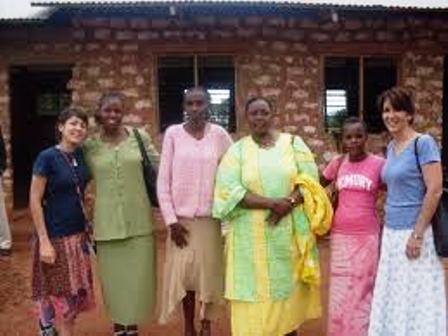 History of the Duruma
History of the DurumaThe modern Duruma may be traced back to about the 17th century, along with other Mijikenda groups, to the southern movement of Bantu-speaking peoples from Somalia. Having settled from around A.D. 500 as far north as Mogadishu, the expansions of the Somali then the Oromo from the north pushed these less warlike peoples back south.
Many coastal peoples have a tradition of living together as family groups in a place called Kirao and a later place called Shungwaya in the 16th century.
The Duruma acknowledge that they were formed from the fusion of three separate groups, one of which had Shungwaya connections. These were Digo people from Kaya Kwale, who came first and built a Kaya at Mtswara, in the tradition of people who came from Shungwaya.
They were later joined by a group of refugee slaves who fled Mombasa. They are referred to as Mokua. This appears to refer to a people originally from Mozambique, known today as Makhuwa. It is known that Makhuwa also wound up in central Somalia as slaves in the early 1800's. The third group was Kamba immigrants.
It is also possible that remnants of other peoples have contributed to the modern Duruma.
The Duruma and Rabai have lived over the centuries fairly free of direct impact from the turbulent events in Mombasa and the coast. They have maintained trading contacts, however, with the Swahili and Arabs.
Identity of the Duruma People of Kenya:
The Duruma are a subsistence farming people growing maize for their own consumption. They live in about 100 villages. They also herd cattle and raise tobacco as a cash crop.
Most children go to school but many older people are illiterate. They have maintained their own ethnic and language identity for several centuries since the early Bantu settlement.
The original people have accepted successive small groups of Bantu settlers, including some of the refugee migrants from northern coast. It is from the latter that the Duruma identify with the Giryama-Mijikenda developed, notably the establishment of a traditional center called a Kaya.
The Kaya is a sacred site in the forest, where special gatherings and rites of passage are held. It is the traditional tribal center for the Mijikenda peoples, unique among northeastern Bantu.
Language of the Duruma People of Kenya:
The Duruma are very close in language and culture to the Rabai, another of the Mijikenda peoples living west of Mombasa. The Rabai number 64,000 and are over 50% Christian by some estimates.
The languages of the Mijikenda are close to the major Bantu language of the East African coast, Swahili.
Most Duruma are bilingual in Swahili. Linguists classify the languages of the Duruma and the Rabai as two dialects of one language. Some Duruma also speak Digo.
Customs of the Duruma People of Kenya:
The Duruma largely maintain their traditional family-village farming and herding life. But they may also be found as fishers and shopkeepers. Some are successful business people. Water is a problem in their area, many children are malnourished, and malaria is rife. There is little electricity outside Kinango.
The Duruma and Rabai differ from other Mijikenda by maintaining a dual descent system: both matrilineal and patrilineal. While the Digo to the east are matrilineal, the northern six Mijikenda groups are patrilineal. Until recently, the Duruma observed with other Mijikenda a practice of age-sets of four years in which generational circumcision was observed as an initiation into adulthood.
Religion of the Duruma People of Kenya:
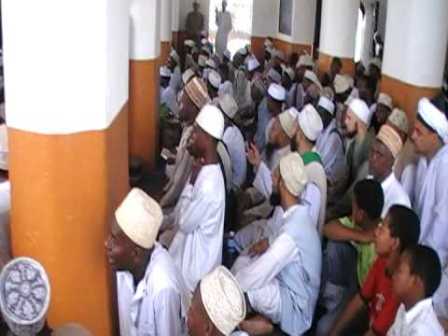 Religion of the Duruma People of Kenya
Religion of the Duruma People of KenyaThe Duruma have some influence from their Muslim neighbors the Swahili, but are primarily traditional. Islam is weakening among the Duruma. The only madrassa (Muslim Quranic school) is in Kinango where there is the only largest mosque. There are a few mud and stick mosques.
To the south of Mombasa and inland, the Digo, another Mijikenda tribe (360,000), by contrast, are strongly Muslim. Prominent in the Duruma-Rabai area are the Anglicans, Methodists, Baptists and Pentecostals. Most do not work exclusively with the Duruma.
Christianity among the Duruma People of Kenya:
The first Christian church established in Kenya was started by Ludwig Krapf of the Christian Missionary Society (Anglican) among the Rabai, neighbors of the Duruma.
In the comity agreement during colonial rule, the Duruma area was assigned to the Methodists, who still maintain a visible presence, but welcome other Christian groups. The Methodist church seems to have waned in interest and activity.
The Duruma are considered to be about 30% Christian. There are several Protestant churches in Kinango and other towns, and some Roman Catholic presence.
Africa Inland Church members in this area are mostly Kamba. The only Bible portions in their language were published in 1848. New translation work is under way.
The Swahili Bible is commonly used among Duruma Christians. Literacy, however, is only about 50%. Greatest needs are considered to be literacy, training for pastors, Bible teachers (Sunday School) and youth workers. A Duruma Bible is in process. The Duruma are moderately responsive to the gospel.
More about Afican Culture
Kenya Art |
Kenya Festivals |
Kenya Gender Issues |
Kenya Gestures |
Kenya Greetings |
Kenya History |
Kenya Language |
Kenya Literature |
Kenya Modern Culture |
Kenya Music |
Kenya National Anthem |
National Dress Cord of Kenya |
Kenya People |
Kenya Respect |
Kenya Taboos |
Kenya Television and Culture |
Recent Articles
-
Garam Masala Appetizers ,How to Make Garam Masala,Kenya Cuisines
Sep 21, 14 03:38 PM
Garam Masala Appetizers are originally Indian food but of recent, many Kenyans use it. Therefore, on this site, we will guide you on how to make it easily. -
The Details of the Baruuli-Banyara People and their Culture in Uganda
Sep 03, 14 12:32 AM
The Baruuli-Banyala are a people of Central Uganda who generally live near the Nile River-Lake Kyoga basin. -
Guide to Nubi People and their Culture in Kenya and Uganda
Sep 03, 14 12:24 AM
The Nubians consist of seven non-Arab Muslim tribes which originated in the Nubia region, an area between Aswan in southern
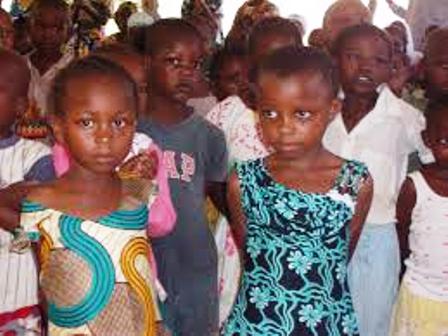
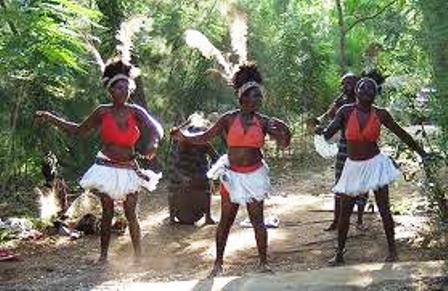
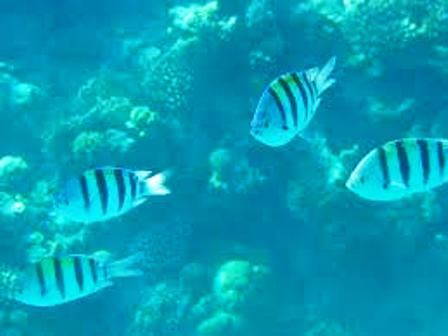
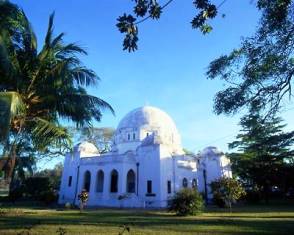







New! Comments
Have your say about what you just read! Leave me a comment in the box below.